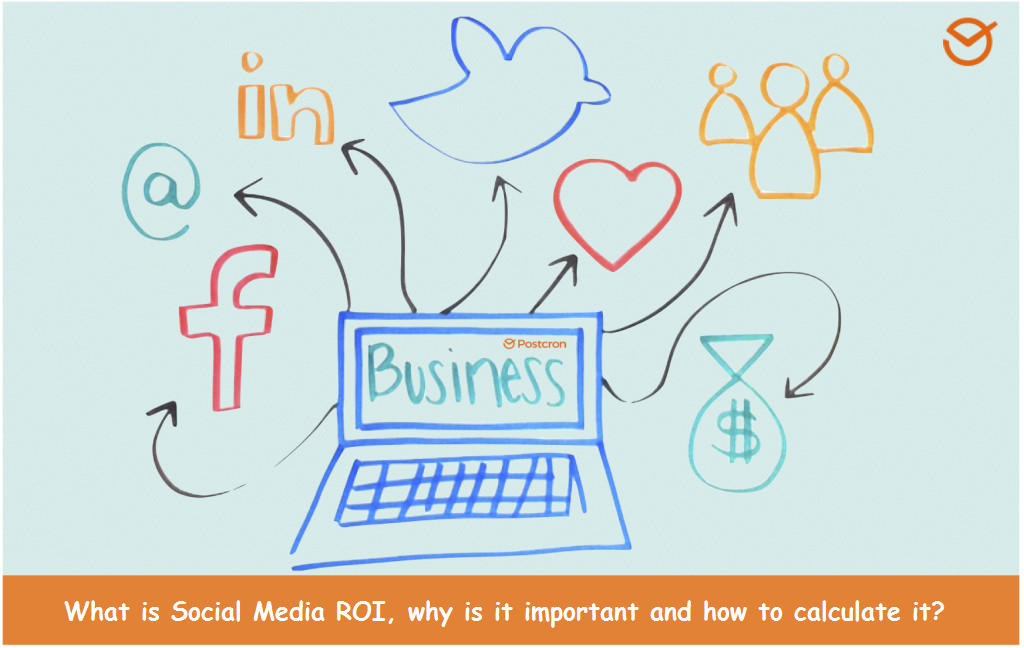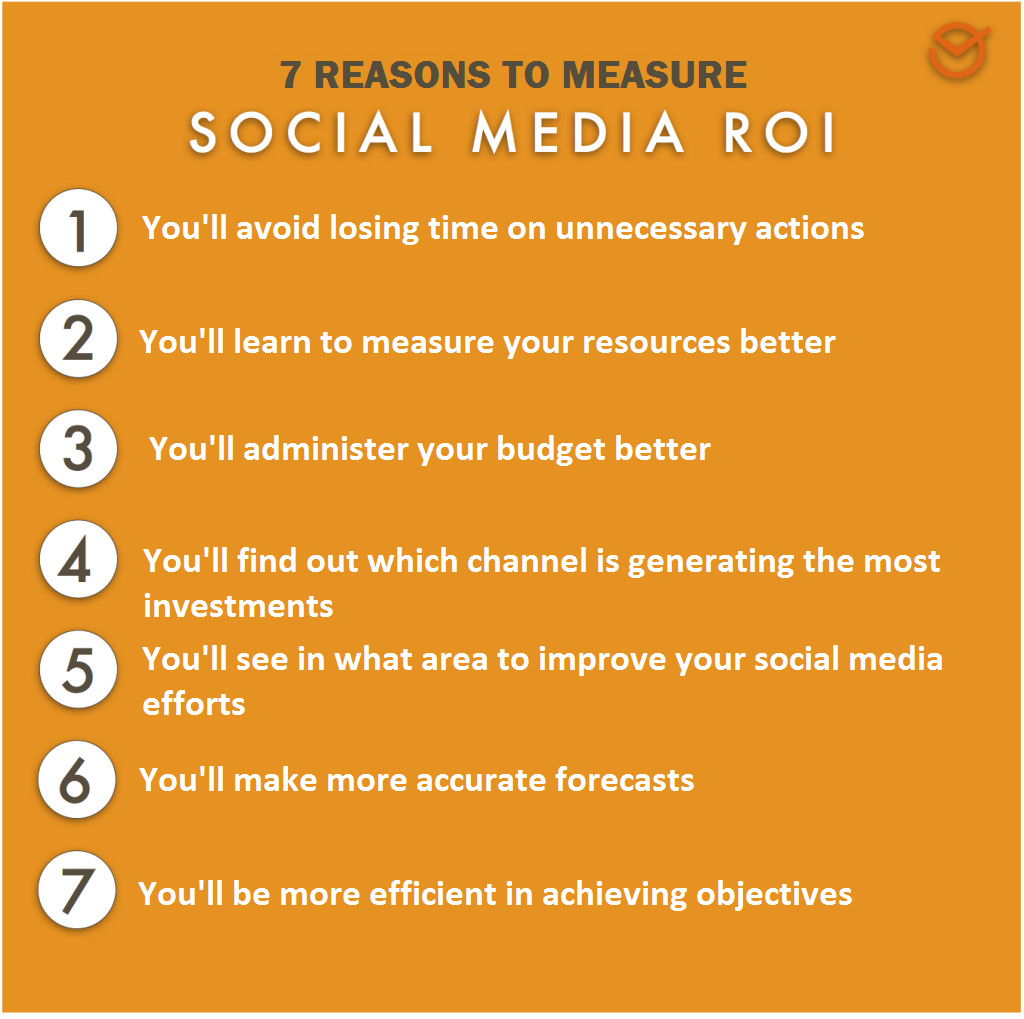Social Media ROI is like beer: many years can pass by without knowing about its existence, but once you fall into its trap there’s no one to stop you.
Ignored by many, discussed by others and loved by the fortunate few who know how to measure it, learning to calculate the ROI of your actions on social media can open the doors to paradise where you’ll live happily with a successful business.
And although social networks have this amazing power to make your business grow with the creation of a Facebook or Twitter profile it’s not sufficient enough to track actions, costs and results. And this is where Social Media ROI, or Return on Investment, comes into play.
So, you’ll want to know what Social Media ROI exactly is because you have to measure it and know how to calculate it, and to ensure that your actions on social networks are working up to their potential you only have to do one thing: keep reading.

What is Social Media ROI and why should you measure it?
There’s an unflinching rule in the digital marketing world:
If you don’t measure the results of your actions, you’ll never know if they’re working.
This is precisely what Social Media ROI or Return On Investment deals with: knowing how effective your campaign is on social networks.
To explain it in layman’s terms,
ROI on social networks is a percentage that we calculate based on the returns and profits obtained through our actions on certain social platforms in order to know what our return rate is.
In other words, Social Media ROI has the important job of helping you find the economical performance of an investment in order to evaluate how much money each dollar invested has generated during a determined campaign.
Thus far it may all seem quite logical, but the reality nowadays is that 40% of companies don’t know whether their efforts on social networks are successful or not, according to a study done by Convince & Convert.
Not only this, but pointed out by another study done by Domo:
3 out of 4 digital marketing experts don’t know how to measure Social Media ROI.
The main problem causing great difficulty for the majority of companies is that they are encountering metrics such as the number of Twitter followers or the quantity of “likes” that a publication on Facebook has without knowing what these figures are important and all this is insufficient when measuring your company’s profit based on your actions on networks.
Because, honestly, what does it really means when your publications on Facebook are shared more than 300 times if this isn’t helping you reach your goals?
Now, you’re probably asking yourself: is it difficult to measure Social Media ROI? A little. Is it necessary? Without a doubt.
For this reason, we’re going to try and make it as easy as possible for you so that when you’re done Reading this you’ll know how to measure the Return on Investment of your efforts on social networks without feeling like your heads going to explode.

How to calculate Social Media ROI in just 5 steps without dying during the attempt (includes formula)
-
Define your objectives
Before you start to measure ROI on social media, there’s something very important you have to do: identify your objectives. And being realistic:
If you don’t know where you’re going, then how are you going to get there?
Take the necessary time to define your brand’s objectives to ensure that you are measuring ROI based on them, because, for example, wanting to generate sales that increase traffic to your website and generating brand image is not the same thing.

When you define your objectives, always remember that, ideally, they should fulfill 5 requirements: they have to be specific, measurable, accomplish-able, realistic and time sensitive; or what is also known as S.M.A.R.T. objectives.
-
Track your KPIs
KPIs or Key Performance Indicators are the metrics which measure if you are completing your objectives or not, in regards to the ones you’ve previously defined.
For example, if your objective is to increase the number of Instagram followers then a good KPI to measure would be reach.
There are many KPIs that you can have as an objective for your business and they normally vary from one Company to another (for example, you shouldn’t be measuring the same KPIs if your objective is to increase sales on Facebook as if your objective is to direct traffic to your blog).
The truth is that KPIs are vital in knowing if you are on the right path and if you are fulfilling your objectives, like ROI — in fact, ROI itself is a key indicator being as it helps us know what the performance of an action is—. We like to say that ROI and the other KPIs go together.
But going beyond all of this: what is the relation between KPIs and ROI? Why do you need to keep KPIs in mind in order to figure out the performance of your social network actions?
First off, you should identify your KPIs so you know what you want to focus on and thus it will be easier to measure ROI —and the return on investment—. KPIs help narrow this down.
For example, if you want to know if your social media content is working, how would you do it?
And this is where KPIs come into play. In this case, for example, in order to know if the content you’re publishing on social media are being read, a good KPI to keep in mind would be traffic; since by measuring traffic you’ll be able to have an idea of how well your actions focused on increasing views functioned and then you can calculate ROI.
Now, which KPIs can help you to find out the return on investment of your actions on social media? You should measure certain KPIs based on what your objectives are. Here are some of the most important:
- Impressions. This allows you to see how many times you appear in your users’ newsfeed in order to have an idea on how many people a determined publication is reaching. If your objective is to introduce people to your brand, for example, then this is an essential metric for measuring ROI.
- Reach. The number of users that have seen a determined publication. This is different from impressions because reach measures how many individual users see a determined publication. It’s vital for measuring your brand’s growth and most of the time you can find statistics on the same platform.
- Engagement. A key social media metric that will help you in knowing the level of engagement users have with your brand. This is the number of comments, retweets, mentions, likes, favorites and anything else considered as an interaction with your brand.
- Traffic. Vital in knowing the number of views you obtain through social media for a certain web page. It usually goes hand in hand with conversions.
- Conversion rate. Fundamental for knowing how many conversions you’ve gotten thanks to social networks, whether it be views from leads or clients or any other conversions related to your goals.
- Rebound Rate. Indicate the percentage of views from social networks which just end up leaving your page a few moments after entering it and not seeing anything else.
Depending on what your goals are, you should focus on certain KPIs, but you should be using them because they’ll help you in analyzing Social Media ROI.
-
Decide which tools you’re going to use to measure Social Media ROI
Fortunately, there are various tools for community managers that can help you to analyze your KPIs and measure your Social Media ROI. Decide which of them you’re going to use to measure your efforts.
Tools, for example, like Twitter Analytics, Facebook Insights and Google Analytics will help you achieve this.
-
Determine the total cost
Before calculating Social Media ROI it’s also important that you keep other costs apart from the ones you’ve already made in your campaign.
Among these total costs can be, for example, hourly rates if your accounts are being administrated by a Community Manager, the value of your work hours if you manage different platforms yourself, the various costs of each social media channel and other costs that can add to this investment.
This way, you’ll have a more grounded view of how much your actions are costing you.
-
Calculate ROI and implement improvements
Now that you are aware of everything you need to keep in mind while measuring your efforts on social media, it’s time to learn the formula for calculating Social Media ROI.
The Social Media ROI of an action is calculated by dividing the net income by the cost of this action and multiplying it by 100.
If this seems a little complicated don’t worry because below you can see an image of the formula you have to follow:
Let’s take a look at an example so you can understand better:
Imagine that you’ve designated 300 dollars to promote on Facebook about “how to become a true online marketing Superman in order to make your business fly towards success in just weeks” and once you’ve finished the campaign you’ve obtained 900 dollars’ profit.
What will the ROI of this action be? You simply have to apply the previous formula as shown below:

Now, what does 200% mean? Basically, this means that while promoting on Facebook you obtained a 200% return on your investment, which is a very good result being as when the ROI is positive it means that the action is profitable and when it’s negative it signifies losses.
Think that the higher the ROI, the better the net profit you’ll obtain per dollar you’ve invested and, therefore, the more profitable your campaigns will be.
So if after calculating the ROI this number is negative, then it’s time to start implementing changes and adjusting your marketing strategies on social networks so you can obtain better results for your efforts.
The important thing is that you know how to measure ROI and have it available to calculate the profits you’ve gained due to social networks, because…
Thanks to ROI you can make better decisions and optimize your budget.
So, now you know: measure Social Media ROI! Your business will be thankful.
On the other hand, think about the sooner you start to measure it the sooner you’ll be able to have an idea on what’s happening to the money you’re investing on social networks. And without a doubt, this will help you to implement better tactics that will translate into an increase in benefits.
Before going, I’d like to know what you think: was this article useful? Do you know your strategy’s ROI importance on social networks? Are you going to start calculating it? We’re awaiting your comments!
Ah! And of course, don’t forget to share this content on social networks so that all your contacts can benefit from it —add maybe with a bit of luck, they’ll invite you to that beer—
If you found this article to be interesting, then you’ll surely be interested in reading these:


